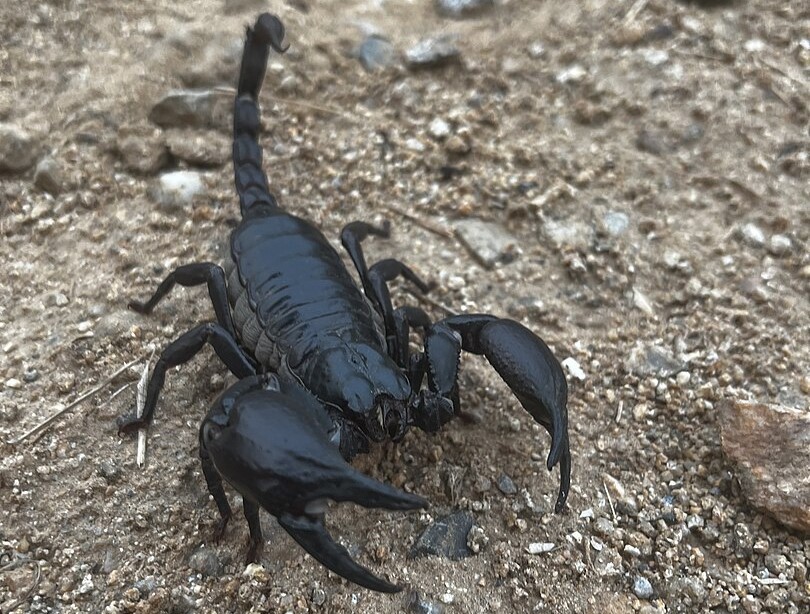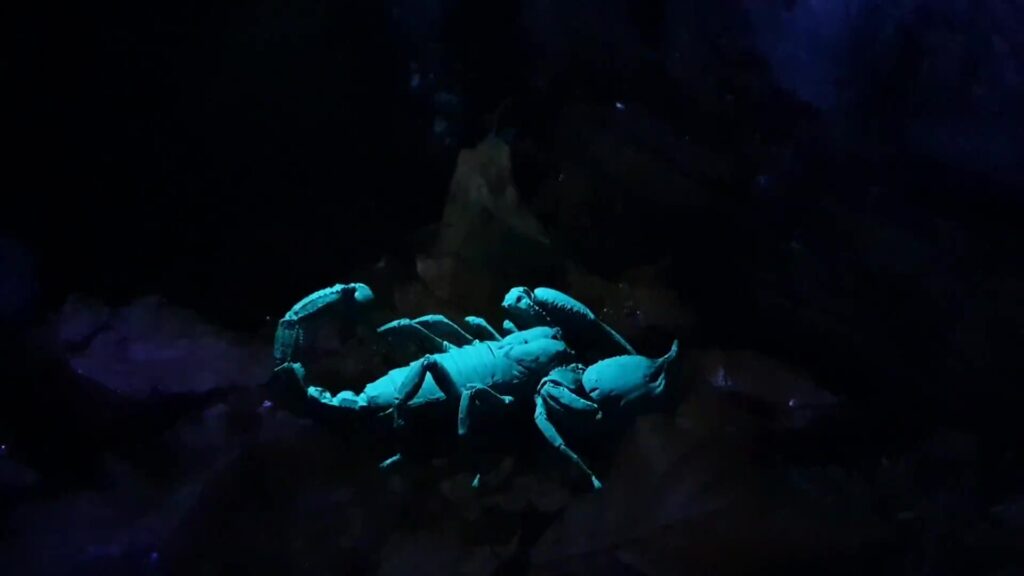Vietnamese Forest Scorpion
Heterometrus laoticus

Venom is being studied for medicine
The Vietnamese forest scorpion is one of the world’s largest scorpion species. All species of scorpions are venomous, but certainly not all have a venom that is dangerous to humans. A sting from a Vietnamese forest scorpion is about as harmless as a bee sting. But the venom of the Vietnamese forest scorpion is being studied by scientists to investigate if it contains substances that can be used for medicines.

Photo: Nathan-Laurenz-CC-BY
Survives on very little food
The Vietnamese forest scorpion lives in tropical swampy forestry areas with a lot of peat. It lives on the ground, preferably hidden under dead leaves, branches or in burrows. It is active at night. Then it hunts for insects or other small insects to eat. But a scorpion needs to eat very rarely – and could get by on as little as one meal a year! The Vietnamese forest scorpion mainly uses its claws when catching prey, and then needs to open up the catch and suck out the insides little by little – because it has such a small mouth.

Photo: Ellika-Nordström-Malmö-Museum
Carrying their offspring on their backs
During the mating season, the Vietnamese forest scorpion can become very aggressive towards other scorpions of the same species. There is fierce competition for the females, and the males perform various moves to impress the female; it can even look like they are dancing hand in hand – holding each other’s claws. The male then places a kind of package on the ground, which contains his sperm. He guides the female to the package and she picks it up with her genital opening. The female’s eggs are fertilised and developed in her body, and after about six months she gives birth to live offspring! For the first few weeks of life, the offspring live on their mother’s back, until they molt (shed their shells) and climb down.

Photo: Ellika-Nordström-Malmö-Museum
Distribution worldwide
Vietnam and Laos

Threat based on the Red List

Trade regulations
CITES: Not listed.